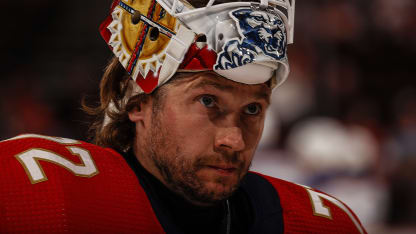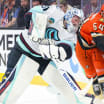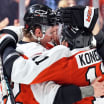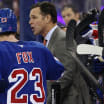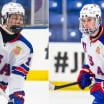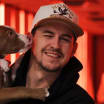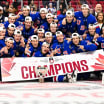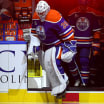He used static holds for strength, the foundation of explosiveness and speed and power. He focused on slow and soft movements, where the goalie could feel his body in order to make it work better.
“If you just push, push, push, you have only one way to do it, the way you do it,” Karjalainen said. “But when you slow it down, take power out of there, then you can try new things, and also adjust your movements.
They talked every day, adjusting here and there, talking again. Karjalainen said, at the time, he counted the points of contacts between him and the goalie during a single month: 2,280.
“There were videos and messages flying back and forth,” he said. “That was a pretty hectic month.”
Without wanting to get too deep into specifics, Karjalainen said that they were particularly concerned with working on Bobrovsky’s core, on shoring up his physical center. He was already one of the fastest goalies at the time, something that Karjalainen challenged him to improve even more, making his lateral movements more efficient, which required better edgework, the last left to Nykvist’s skills.
“The whole movement skills, they needed to be better,” Karjalainen said. “The whole world of physics needed to be better, from toes to the neck, everything needed to be stronger. Of course, he’s very, very flexible. Then it needs more support, so it needs a certain type of power.
“For example, when you are stretching a lot, if you don’t have power, you are going to break yourself. So, the practices are more from the martial arts, we need to also be very flexible, but we need to be very strong also in the range of motion.”
That was just the beginning.
More and more, the parallels between martial arts and goaltending revealed themselves.
“The elements are so close,” Karjalainen said. “Because the speed of the game, the reaction, the game itself, there’s multiple opponents, they never do what you were thinking that they are doing, they are trying to trick you always. Something happens always that you are not expecting. And also the movement area, it is pretty small.
“The elements are more or less the same.”
It’s not just the physical where Karjalainen saw parallels. He saw it in the mental game, too, in the pressure that goalies face, that martial arts practitioners face. It all made sense to him.
Very quickly, it made sense to Bobrovsky too. All that was left was to put it into practice.
----
When Korpisalo was called up to the Blue Jackets in 2015-16, he was 21 years old. His introduction to the League was Bobrovsky.
“I remember getting a glimpse of what he does daily, that just blew me right off right there,” said Korpisalo, now with the Ottawa Senators. “Just, you thought you were a pro, but seeing him? It’s a completely different level.
“I got really early to the rink, always, and he was there every time before me.”
Bobrovsky used to work out relentlessly, with an extreme focus on cardio.
“I just used to train as hard as possible and as long as possible, but you have to understand that it’s not the way, it’s not the optimal way,” Bobrovsky said. “You can’t sustain that for a long time.”
To stay healthy and reach his goals, he needed to vary the way he trained, and strengthen different areas of his body and his game.
“Our sport is so complex,” he said. “You have to have good coordination, movement ability, biomechanics, cardio, the ice technique on the skates … it’s completely different, the body movements.”
Nykvist and Karjalainen were instrumental in his coming to that conclusion, but another person helped bring changes to the mental side, to how Bobrovsky looked at the game and his career: Carolina, his first child, born two years ago.
“When your daughter is born and you hold that fragile little human, very fragile and she’s not going to survive without you, priorities change, for sure,” Bobrovsky said.
“I feel like you have to understand that you are not only hockey player, you are just human being as well.”
